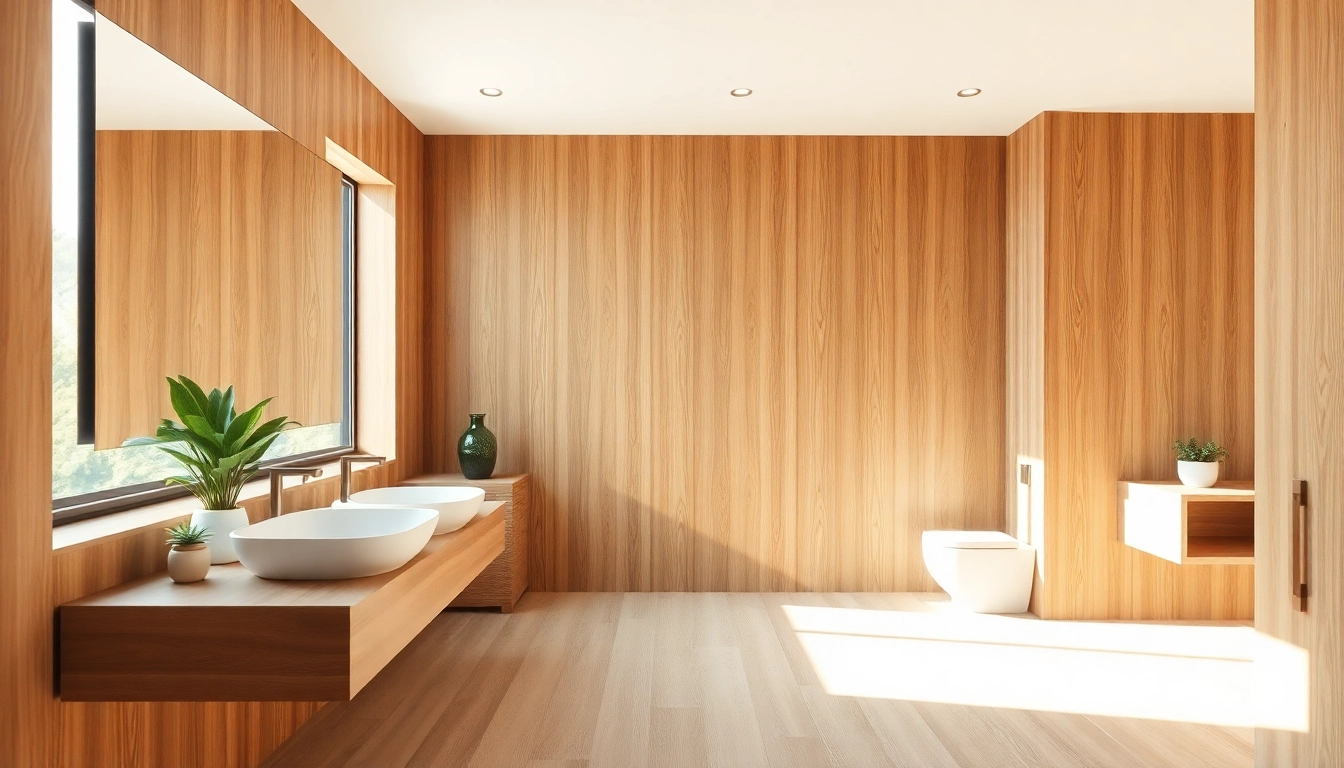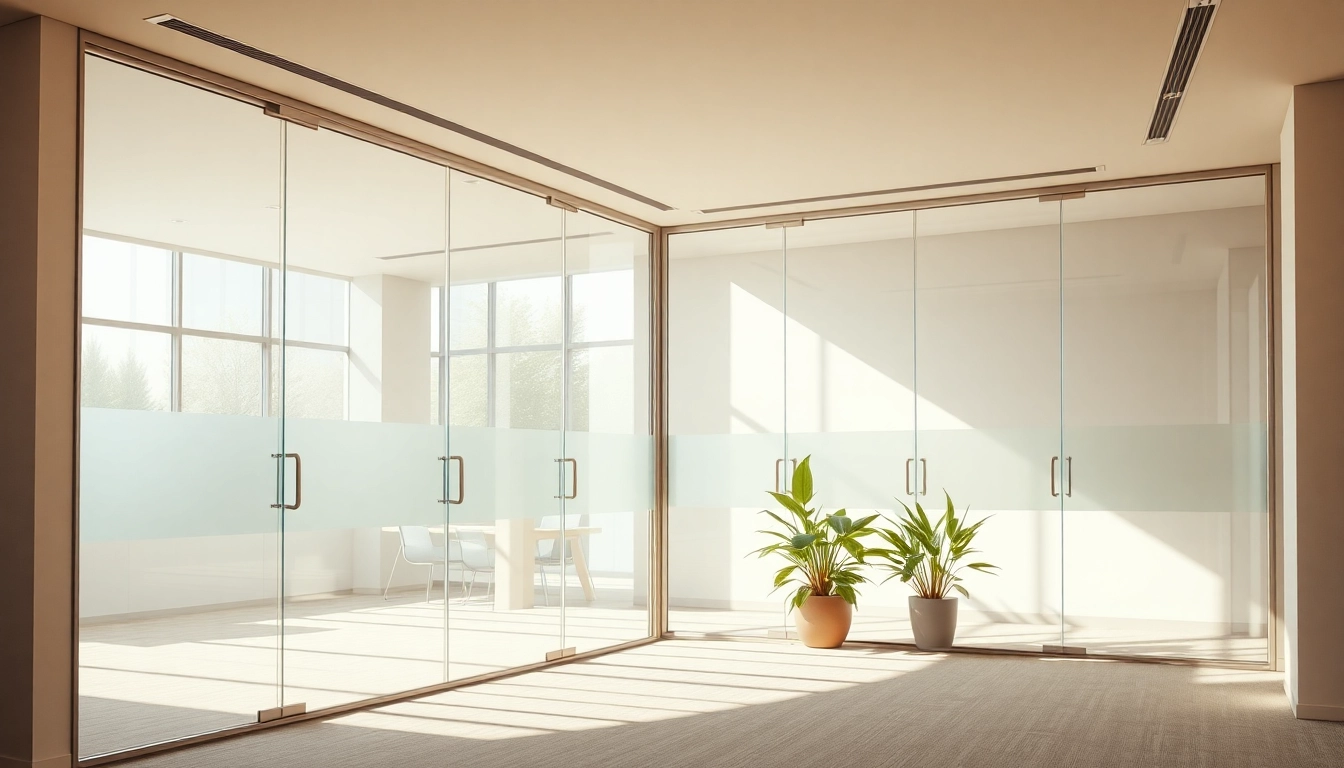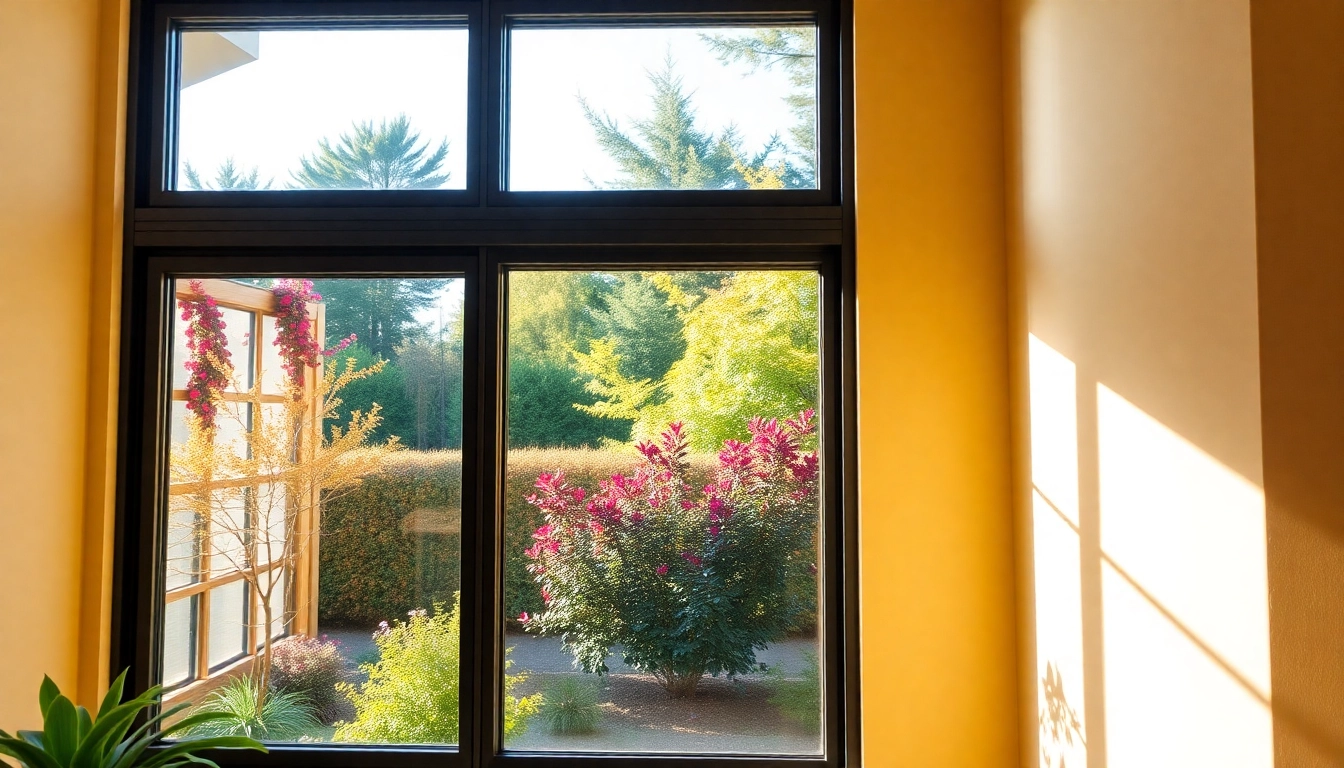Understanding the Benefits of Wood for Bathroom Walls
Choosing the right materials for your bathroom can significantly impact the overall aesthetics, functionality, and mood of the space. Wood for bathroom walls is increasingly becoming a popular choice among homeowners and designers alike. Its warm tones and textures bring an inviting atmosphere to what is often a utilitarian space. The versatility of wood does not only cater to traditional tastes but also fits seamlessly into modern design frameworks, making it suitable for various styles. In this article, we will explore the numerous advantages of using wood for bathroom walls, as well as essential considerations for choosing, installing, and maintaining this material.
Why Choose Wood in Bathing Spaces?
Wood brings a natural element into bathrooms that synthetic materials cannot replicate. Beyond its aesthetic appeal, wood is also recognized for its acoustic and thermal properties. Here are some of the key reasons to consider wood in bathing spaces:
- Warmth and Comfort: Wood provides a unique warmth that contrasts with the often cold ceramic tiles and glass commonly found in bathrooms. This natural warmth can enhance comfort levels, especially in cooler months.
- Eco-Friendly Options: Many wood types are sustainably harvested, making them an eco-friendly choice. Bamboo and reclaimed wood are particularly popular for their minimal environmental impact.
- Unique Aesthetic Appeal: The texture and grain of wood offer distinctive visual features. Each piece is unique, adding character and charm to the bathroom.
- Versatility: Wood can be finished or stained in countless ways, enabling it to blend with various design styles, from rustic to contemporary.
Pros and Cons of Wood for Bathroom Walls
Before committing to wood for your bathroom walls, it is important to consider both the advantages and potential drawbacks. Below is a breakdown to help you make an informed decision.
Pros
- Enhances Aesthetic Quality: Wood adds a rich, sophisticated look, providing an environment that is both relaxing and visually stimulating.
- Sound Absorption: Wood can help absorb sound, creating a more tranquil bathing experience.
- Thermal Regulation: Unlike tile and stone, wood maintains warmth, making it more comfortable in cooler climates.
Cons
- Moisture Vulnerability: Bathrooms are humid environments, and without proper treatment, wood can warp, swell, or develop mold.
- Maintenance Requirements: Wood needs regular upkeep, including cleaning, sealing, and re-staining, to maintain its look and durability.
- Initial Cost: Depending on the wood species and quality, the initial investment can be higher than other wall materials.
How Wood Affects Bathroom Aesthetics
The aesthetic appeal of wood can be transformative. It creates a warm atmosphere that allows for various decor styles. Here’s how wood can influence the design of the bathroom:
- Color Compatibility: Wood offers a range of colors, from dark walnut to light pine, allowing you to harmonize with existing color schemes.
- Texture Contrast: Incorporating wood against smooth surfaces, like tiles or glass, creates an interesting contrast, making the space more visually appealing.
- Timelessness: Wood tends to age gracefully, providing a timeless appeal that keeps the design relevant over the years.
Choosing the Right Type of Wood for Bathroom Walls
Not all wood species are suitable for bathroom walls. Selecting the right type can enhance longevity while ensuring aesthetic appeal. Below are some considerations to guide you in your selection.
Best Wood Species for Humid Environments
When choosing wood for bathroom walls, look for species that naturally resist moisture, decay, and insects. The following types are ideal for humid environments:
- Cypress: Known for its natural resistance to moisture and rot, cypress wood has been used in wet areas for centuries and features a beautiful grain.
- Redwood: This wood is not only aesthetically stunning, but it also resists shrinking and warping, making it a great choice for high-humidity areas.
- Teak: Renowned for its durability and water-resistance due to its natural oils, teak is often featured in luxury bathrooms.
- Western Red Cedar: This wood is lightweight and naturally resistant to decay, which makes it suitable for high-moisture environments.
Finishes and Treatments for Longevity
To ensure that wood for bathroom walls endures the rigors of humidity and water exposure, appropriate sealing and finishing are crucial. Here are some recommendations:
- Waterproof Sealants: Applying a high-quality polyurethane or marine-grade varnish can provide a water-resistant layer that protects the wood.
- Oil Finishes: Linseed oil or tung oil can enhance the wood’s natural beauty while offering a degree of moisture protection.
- Regular Maintenance: Periodic reapplication of sealants is essential to maintain water resistance over time.
Factors to Consider When Selecting Wood
In addition to species and finishes, consider the following factors:
- Budget: The cost of wood can vary significantly, depending on the species and quality.
- Installation Method: Some species may require specific installation techniques or additional support.
- Design Aesthetic: Consider how the wood choice fits within the overall design theme of the bathroom.
Installation Tips for Wood for Bathroom Walls
Successfully installing wood walls in a bathroom requires careful planning and execution. Here’s a succinct guide to help you through the process.
Preparing Your Bathroom for Installation
Before beginning installation, ensure your bathroom is ready:
- Measure Accurately: Take precise measurements of your walls, accounting for windows and doors. Accurate measurements prevent waste.
- Check Humidity Levels: Ensure that the bathroom’s humidity levels are manageable, ideally using a dehumidifier in the days leading up to installation.
- Choose Your Design Layout: Plan the layout to minimize waste and maximize visual appeal.
DIY Installation Steps for Wood Walls
If you’re considering a DIY project, here’s a step-by-step approach:
- Prepare the Wall Surface: Clean the walls, removing any old fixtures or wallpaper and ensuring a smooth surface.
- Install a Vapor Barrier: To prevent moisture damage, apply a vapor barrier or moisture-resistant board as the backer for your wood panels.
- Cut Your Wood Panels: Cut the panels to size using a suitable saw, ensuring clean edges for an elegant finish.
- Attach the Panels: Use construction adhesive or nails to attach the wood panels. Start from the bottom and work your way up.
- Seal the Joints: To ensure water resistance, fill in gaps and seams with a sealing compound.
- Finish with Sealant: Once all panels are installed, apply your chosen sealant to protect against moisture and improve longevity.
Hiring Professionals: What to Look For
If DIY isn’t your preference, hiring a professional can be the way to go. Here are some tips for hiring the right expert:
- Experience: Look for contractors with experience in installing wood in high-moisture areas.
- References: Ask for references and view their previous work to gauge quality.
- Estimates: Obtain multiple quotes to understand the market rate and ensure you are getting a fair deal.
- Insurance: Ensure that the professional has liability insurance and workers’ comp in case of accidents.
Maintaining Wood for Bathroom Walls
Proper maintenance is essential to preserve the beauty and functionality of wood walls. Below are guidelines for keeping your bathroom wood looking its best.
Regular Cleaning and Care Guidelines
Routine maintenance includes:
- Gentle Cleaning: Use gentle, pH-neutral cleaners to wipe down the wood surfaces, avoiding abrasive materials that can scratch the finish.
- Dry Wiping: Regularly wipe down wood surfaces to remove any moisture before it has a chance to seep in.
- Periodic Inspection: Frequently check for signs of moisture damage or mold, and address any issues promptly.
Dealing with Moisture and Damage
Moisture is one of the biggest threats to wood walls. To combat this:
- Use Bathroom Fans: Ensure proper ventilation with exhaust fans to reduce humidity levels.
- Fix Leaks Immediately: Address plumbing issues as soon as they arise to prevent prolonged exposure to moisture.
- Mold Remediation: In case of mold growth, employ effective mold-removing solutions and repair any damage.
Reviving the Look of Your Wood Walls
Over time, wood may dull or become discolored. Here are steps to revive its look:
- Refinishing: Sand down the surface and apply a fresh coat of stain or sealer to restore the wood’s appearance.
- Touch-Ups: Regularly touch up areas that may have been scratched or damaged to maintain a cohesive look.
- Expert Help: Consider hiring a professional for large-scale refinishing or if the damage is extensive.
Design Inspiration Featuring Wood for Bathroom Walls
Looking for design ideas? Here are some inspirational themes that incorporate wood into bathroom design.
Modern Minimalist Ideas
In modern minimalist designs, wood can be used sparingly to create a streamlined look:
- Accent Walls: Feature a wood accent wall behind a freestanding tub or vanity to add warmth without overpowering the minimalistic décor.
- Floating Shelves: Use simple, natural wood shelves for plant displays or towels, blending utility and aesthetics.
- Natural Light: Pair wood with large windows or skylights to illuminate the space and highlight the natural beauty of the wood.
Rustic and Farmhouse Styles
For those who appreciate a more rustic, farmhouse aesthetic, wood can be used abundantly:
- Wood Paneling: Full wall paneling of reclaimed wood creates a cozy, nostalgic feel.
- Decorative Beams: Exposed wood beams can add character and authenticity to the farmhouse look.
- Vintage Fixtures: Combine wood with vintage-style sinks and fixtures for a cohesive rustic theme.
Combining Wood with Other Materials
One of the most dynamic ways to use wood in bathroom walls is to blend it with other materials:
- Wood and Tile: Mixing wood with ceramic or porcelain tiles offers contrast while enhancing both materials’ appeal.
- Concrete Accents: Pairing wood with concrete can create an urban industrial vibe while maintaining warmth.
- Glass Elements: Incorporating glass features, such as shower enclosures, allows light to play off bare wood and highlight its beauty.
In summary, the aesthetic, practical, and environmental benefits of wood for bathroom walls make it a compelling choice for any homeowner. Whether you’re enthralled by the rustic charm or the modern sophistication it can provide, wood can elevate your bathroom’s design significantly. With appropriate selection, installation, and maintenance techniques, your wood walls can remain not only stunning but also functional for years to come.




